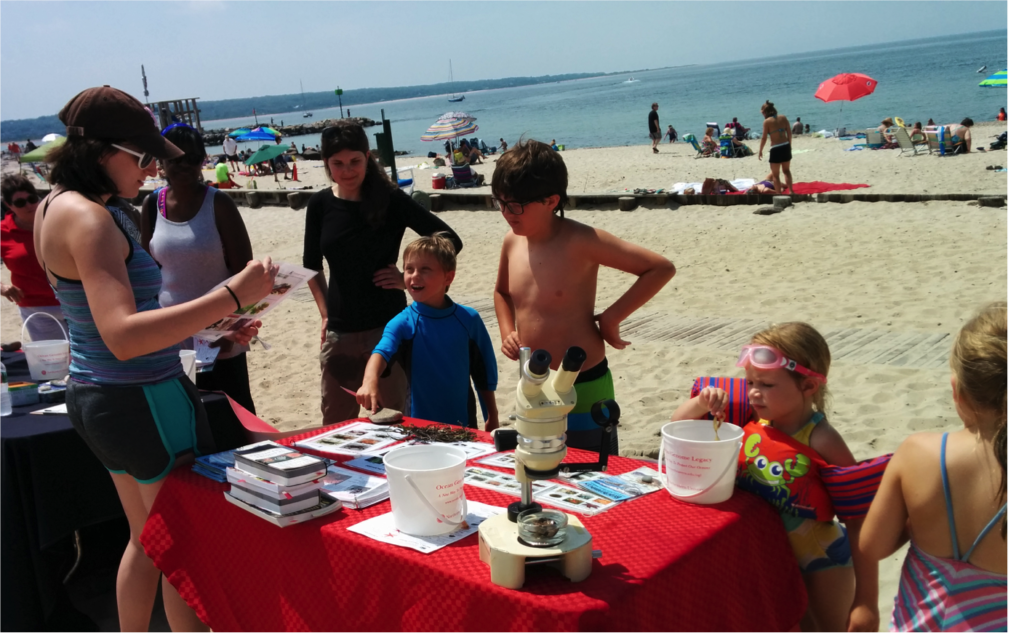What better place to study ocean life than an island? That’s why the Ocean Genome Legacy (OGL) crew packed up our buckets and headed to the quaint fishing village of Menemsha, Martha’s Vineyard, at the end of July to host the first annual Bioblitz on Menemsha Beach.
OGL’s Bioblitz, our biodiversity scavenger hunt, was a splashing success, with many locals, beachgoers, and Northeastern alumni making hands-on discoveries on the waterfront.

In addition to the usual crabs, periwinkles, and barnacles, local sea captains Gordon Thompson and Chip Vanderhoop landed several important fish species, including black sea bass, summer flounder, scup, and even a shark! Unlike Steven Spielberg’s infamous Jaws, our little smooth dogfish friend was only as long as your arm and weighed less than your neighbor’s cat. He also had flat, blunt teeth ideal for crushing crabs and other crustaceans, instead of the stereotypical sharp “shark” teeth. But we were not disappointed and managed to take a tiny fin clip for DNA extraction before releasing the shark back into the great blue.
OGL chose Martha’s Vineyard because it is a hotspot for citizen science given its maritime heritage, active fishing community, and recreational ties to the sea. Moreover, Martha’s Vineyard is a scientifically important destination near a geographic boundary that may see shifts in climate in the coming years. By watching over the Vineyard’s beaches from year to year, our citizen scientists will help to notice changes and protect marine life.
The OGL biorepository works with researchers, educators, and citizen scientists around the globe to preserve valuable DNA samples and inspire the next generation of ocean stewards. If you would like to support our efforts, please consider making a gift.
Would you like to join our next Bioblitz? Sign up for the upcoming Nahant Coastal Bioblitz here!
